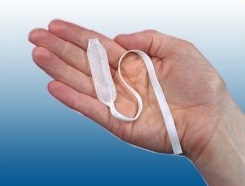While many people go into labour on their own, sometimes labour needs to be stimulated or induced for medical reasons. Your labour may be induced if:
- You are 1 to 2 weeks past your expected due date
- Your baby is not growing as they should or has a health issue
- Your membranes have ruptured, you’re at your due date and your contractions haven’t begun after 24 hours
- You have continuous high blood pressure that is impacting your or the baby’s health
- Fetal monitoring and/or ultrasound show that your baby may not be doing well
- You have diabetes that is impacting your health or the baby’s health
- Your baby isn’t moving as much
- The placenta is not supplying the proper amount of nutrients and oxygen to the baby
- Your water has broken and your Group B Strep swab is positive (antibiotics will also be started)
If an induction is advised, your caregiver will discuss the options for you and your baby. General risks of induction may include an increased risk of preterm delivery if your due date wasn’t accurate and possible emotional stress for you and your partner if the induction does not start labour.
Sometimes a person goes into labour on their own but their labour stops progressing. Helping labour progress using medical procedures is known as augmentation. Medically augmenting labour is done using many of the same procedures that are used with induction and have the same benefits and risks. A labour person choosing to use an epidural for pain relief is more likely to need their labour augmented as the medication can slow or stop the uterus from contracting.
There are non-medical methods that may also help the progress of labour. These methods can include:
- Movement such as walking, rocking and dancing
- Getting into upright positions if you have been lying down
- Activities that will help you relax and produce more beneficial labour hormones, for example using the shower, massage and slow rhythmic breathing
- Staying well hydrated and well nourished
- Close physical contact with your partner can help increase your own oxytocin levels, for example slow dancing, kissing and cuddling

Nipple stimulation may also increase oxytocin levels, but first discuss this method with your healthcare provider to see if it is right for you.
Cervical ripening
At the end of pregnancy, before labour starts , or in early labour , the cervix starts to soften and open, this is known as effacement or ripening. A “ripe” cervix is soft, low, forward in the vagina, and starting to dilate (your earlobe feels like a ripe cervix).
Some people will be offered a procedure during a vaginal exam to open the cervix and separate the membranes from the inside of the cervix. This procedure is know as stripping or sweeping the membranes. It is suggested that it may help ripen the cervix. This may be offered at a prenatal checkup at the end of pregnancy before the due date. The benefit of the procedure is that for some people it may prevent them from going past their due date and needing a medical induction. The risk of the procedure is the bag of waters may break early before the person’s body is ready to go into labour. As contractions are less likely to start on their own, they would then be more likely to need a medical induction. It is common after the procedure to experience cramping and some light bleeding.
If labour is induced before the cervix is ready, it may be necessary to prepare or “ripen” it. Methods used to soften or “ripen” the cervix before induction are:
- A Prostaglandin gel or a slow release packet may be inserted close to the cervix. The slow release packet, Cervidil, has a string attached so it can be removed if contractions start or become too strong. Sometimes if the contractions become too strong it can decrease the oxygen supply to the uterus and the baby which can lead to cesarean birth.

- A catheter (small rubber tube with a balloon end) is inserted into the cervix during a vaginal exam. The balloon is then inflated with sterile water to put pressure on the cervical opening. The end that extends outside the vagina is taped to the upper thigh. This works to dilate the cervix causing it to open 3 to 4 cm. It can cause some cramping and may start labour on its own. If labour does not start after “ripening” with the catheter your cervix should be ready for other methods of induction to work.
These methods of getting the cervix ready for labour may need to be repeated to ripen the cervix. For some people these procedures may start labour without continuing onto full induction with oxytocin.
Methods of labour induction
Prostaglandin vaginal gel
- Prostaglandin vaginal gel may be inserted into your vagina to stimulate labour. A risk of this procedure is it may cause the contractions to become too strong and decrease the oxygen supply to the uterus and the baby which can lead to cesarean birth.
Artificial Rupture of Membranes
- This procedure is done during a vaginal examination using a tool called an amniohook. The care provider uses the amniohook to make a tear in the membranes to release the amniotic fluid.
- This procedure releases some of the amniotic fluid surrounding the baby. It may stimulate contractions by causing direct pressure of the baby’s head against the cervix. The pressure causes the release of prostaglandins which “ripen” or soften the cervix and stimulate contractions
- Artificially breaking or rupturing the waters may be done at any time before or during labour
- Sometimes the membranes are ruptured to allow for the insertion of an internal fetal monitor to obtain a more accurate reading of the baby’s heart rate
- The membranes provide a protective barrier against infection and once it is gone there is increased risk to you and your baby of infection if your labour is prolonged
- The membranes and amniotic fluid act as a cushion between your cervix and the babies head. Once that cushion is gone the intensity of the contractions is increased
- The increased intensity of contractions may make it more likely the labouring person will request pain medications
- Without the cushioning effect of the water, there may be more pressure on the umbilical cord, which can cause fetal distress, which can lead to other procedures being needed

Oxytocin Induction
- Oxytocin is a hormone produced by the body to stimulate the uterus to contract. A synthetic oxytocin (pitocin, syntocinon) is given by intravenous (IV) to induce labour
- The IV is regulated by the caregiver through a pump which gives an exact amount of the drug. The dosage is increased slowly until there are effective, regular contractions causing dilation.
- An induction using synthetic oxytocin requires close monitoring of both the labouring person and the baby. This may include continuous electronic fetal monitoring once active labour begins
- Inducing labour doesn’t always work the first time. A person may be taken off the IV for a break before restarting the procedure
- A labour that is induced or augmented with synthetic oxytocin may be faster and more intense than normal labour. A labouring person may need extra support to cope with the contractions that come on fast and are more painful and closer together
- The increased intensity of contractions may make it more likely the labouring person will request pain medications
- Induction with synthetic oxytocin increases the risk of cesarean birth because some babies don’t cope well with the stronger contractions and become distressed
- For some labouring people the procedure doesn’t produce effective contractions to dilate the cervix, leading to a cesarean birth
- The labouring person’s mobility can be restricted due to extra monitoring and the IV pump, this can make it more difficult for them to use positions that help the baby get into a good position for birth and can lead to an increase in the need for assisted birth (forceps, vacuum, cesarean). Wireless monitoring equipment may be available to help maintain mobility
- Babies of parents that have had synthetic oxytocin induction may be at an increased risk for jaundice. Some of the medication reaches the baby during labour and it may take longer for the baby’s liver to break it down. If baby becomes jaundiced they may have difficulty with early breast/chestfeeding.
